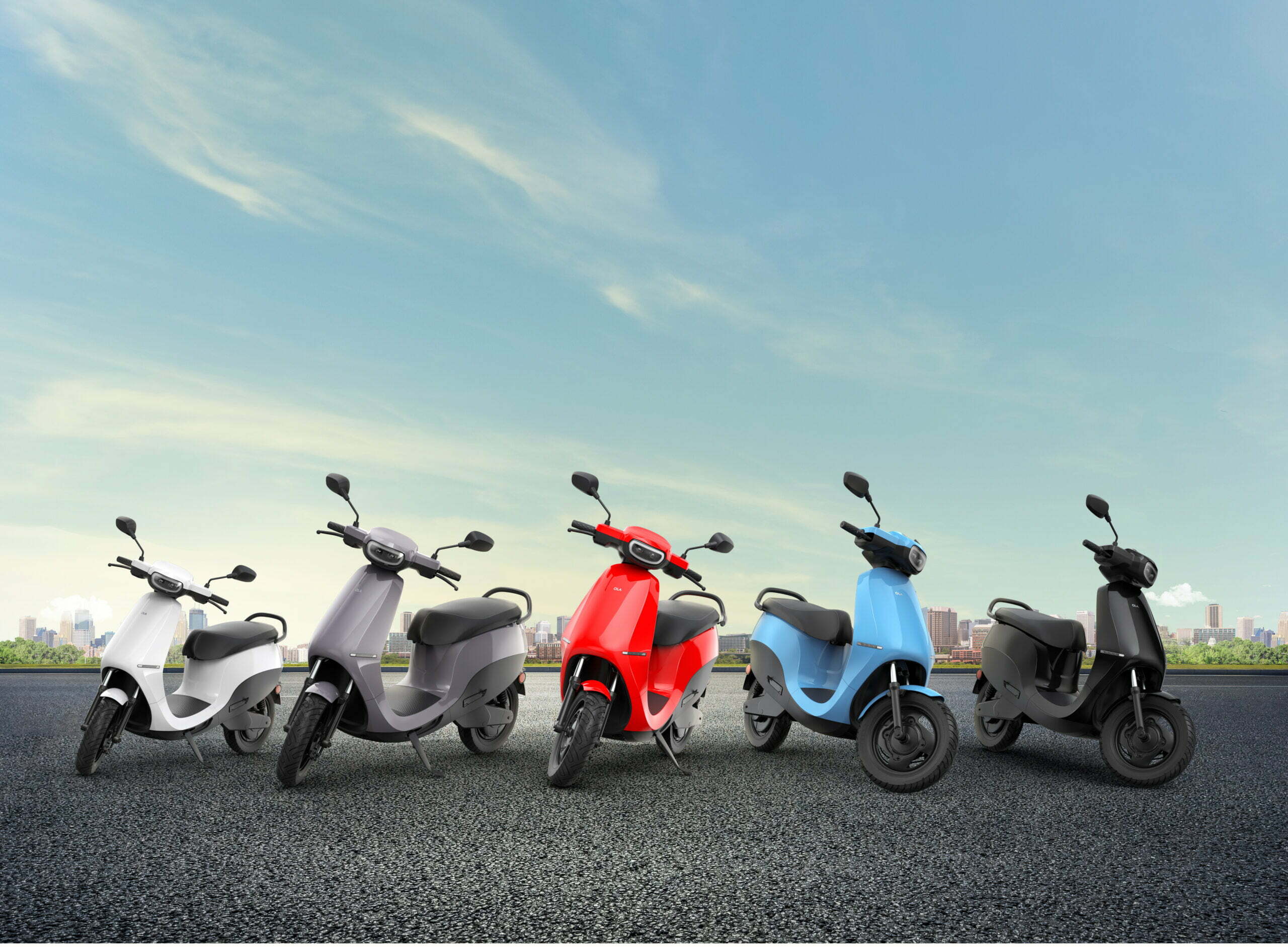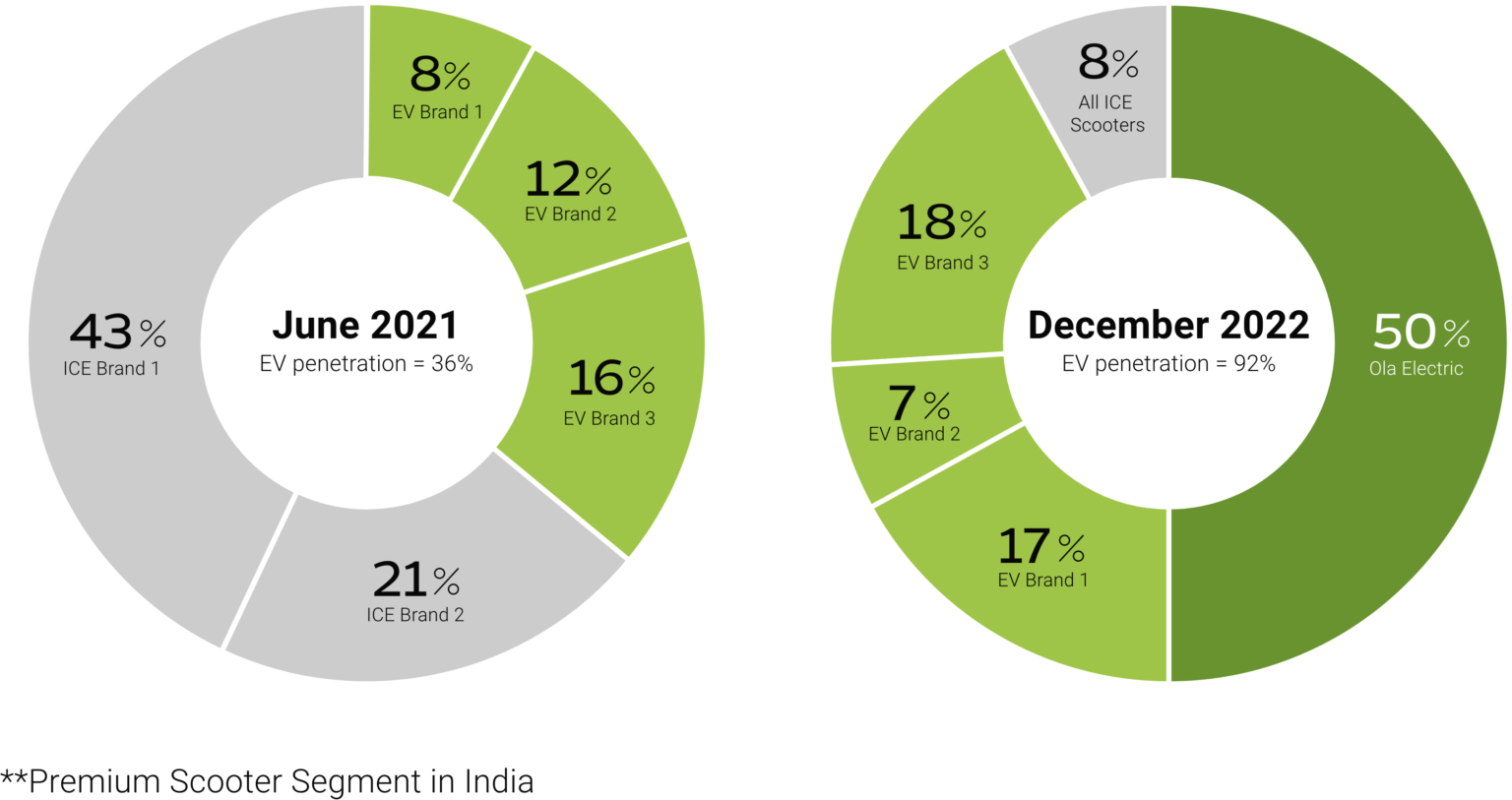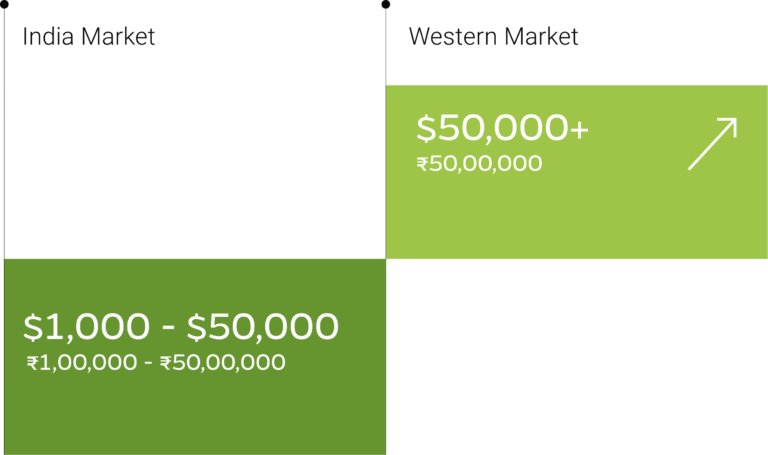The blog by Ola Electric’s Bhavish Aggarwal points out how Ola went sky high thanks to multiple factors in the year 2022 and shows signs of growth and relentless optimism at Ola Electric HQ.
2022 will be remembered as the year India’s EV revolution truly took off. From just 4000 units a month in June 2021, the monthly run rate reached 80,000 units towards the end of 2022, a 20x growth! From less than 1% penetration in 2021, to almost 6% in just a year, the EV revolution in India has not only been restricted to the urban centers, but is proving to be a pan India phenomenon! In fact, many cities like Bengaluru, Pune, Surat, etc already have an EV penetration of almost 20%!
The customer preference for EVs across tier 1, 2, 3 cities and rural centers showed us that the market in India had always existed, ready to embrace EVs – the new, superior technology.
While so much has been achieved in just a year, this is only the beginning. A much bigger opportunity lies ahead. The global EV transformation started in the west with companies like Tesla and more recently Rivian, Lucid, and traditional European carmaker’s like BMW, Mercedes, etc joining in. These companies have focused on products like luxury sedans, large pickup trucks and other formats relevant to the western audience. Even the cheapest Tesla Model 3 will cost upwards of $50,000 (or ₹ 50,00,000 in India).
For a majority of the world, mobility doesn’t mean luxury products. In countries like India, more than 99% of products sold are priced between ₹ 1,00,000 – ₹ 50,00,000! Same is the case in South East Asia, Latin America, Africa and even to a large extent in some developed geographies like Europe and Japan. This price point encompasses product segments from 2Ws including scooters, motorbikes and small, mid size SUVs and cars.
Traditionally in the ICE era, the Japanese dominated this segment with iconic companies like Honda, Suzuki, Toyota, Nissan, Yamaha, Kawasaki, etc by developing core technologies, manufacturing at scale and controlling the global market. This in turn propelled Japan as one of the top industrial nations of the world!
Today, it is India’s destiny and opportunity to build world class products in these segments and become a global leader. Our strengths of being one of the largest and fastest growing domestic markets, entrepreneurial and innovative companies, strong government and policy momentum, world class talent and capital access will enable a strong play. To achieve this ambition, we need to have a clear vision and operate with speed and without falling for fear and uncertainty driven by vested interests.
As India’s EV revolution has picked up steam in 2022, there have been some arguments made against it by various stakeholders. I will list the top 3 and counter them.
Myth 1: EVs are not sustainable till the power generation is coal based
Reality: Even with India’s current power generation mix, EVs are less than half as polluting as ICE vehicles. An ICE engine has an energy conversion efficiency of 30% whereas an EV motor has an energy conversion efficiency of 95%. And as we install more renewable power and our mix changes towards renewables, the same EV car that you drive becomes cleaner and cleaner towards a future where all power will be renewable.
Myth 2: Lithium is owned by China, so India’s dependence on China will increase with higher EV adoption
Reality: China currently dominates only the midstream processing of lithium. However, the majority of lithium mines are located in Australia, Chile and Argentina. China doesn’t control a vast majority of these mines. By focusing on localizing the midstream processing of lithium and partnering with these countries, India can build an alternate supply chain for itself and the world.
Myth 3: Hydrogen is the future, not EVs
Reality: While hydrogen is an exciting energy technology, its application will be much more in static industrial setups. It will never be as efficient as EVs. Imagine, using electricity to produce hydrogen, then compressing and shipping over thousands of kilometres and then pumping it into hydrogen cars and converting it back into electricity. The grid is the most efficient system to transport electricity and hence EVs will always be much cheaper than hydrogen cars.
This is India’s opportunity to seize the 21st century. This will be India’s decade of EV transformation and becoming a global EV hub. To build this future, India will have to focus on a 4 pronged strategy.
Build world class aspirational products: The $100 billion Indian auto market will rapidly transform into EVs as companies embrace the disruption being caused by electric and connected technologies, modern design aesthetic and reimagine auto products for a new aspirational consumer. These products, if built as best in class in performance, technology and design, can become global benchmarks in their respective segments.
Invest in R&D and build the core technology: The internal combustion engine was the centrepiece of the ICE era. Analogously, the Lithium cell is the centrepiece of the EV era. Lithium tech is far from being a commodity. There is a lot of innovation to be done to improve the performance, safety and cost of cells. Improving the energy density and fast charging speeds of lithium cells, bringing sodium ion cells into real world usage from the lab, accelerating the solid state cell roadmap, making cells work better in our hot climate, are some of the areas we can lead the world by investing into our own core R&D.
Build local supply chains in new materials and components: To create world-class EV products and core cell technology, we need to build local supply chains for new materials and components. We can’t just be final assemblers of the products! This includes motors, rare-earth magnets, power electronics, semiconductors, lithium processing, and electrode production from minerals like Graphite and Nickel. We can leverage India’s strong software, chemical and pharma industries, as well as our growing electronics manufacturing base to invest in these areas.
Attract best talent from around the world:
The above three strategies won’t be possible unless we become a global talent hub to attract both non-resident Indians and global talent to work with us in this journey. We have to prioritize IP creation, reward tech talent at global standards, and create an enabling ecosystem for such a multidisciplinary talent ecosystem to collaborate and thrive.
Our ambitions and plans, at Ola, have been inspired by this opportunity that India has to become a global hub for EVs. We started our journey on 15th August, 2021 with our announcement of our first scooter and the construction of the world’s largest 2W plant. It’s only been 15 months and Ola is already the largest EV company in India both by revenue and volume, as well as the fastest growing one! We have sold almost 1,50,000 EVs this year and are working towards our Mission Electric – all 2Ws and all cars sold in India by 2030 to be electric.
We have a 3 step strategy to build this future:
Product diversification and Global scale manufacturing: Electrifying 2Ws allows us to build large global scale and competitive capabilities in core technologies, supply chains and infra like charging infra etc. Once all of India’s 20 Mn 2Ws are electrified, India will become the third largest market for EVs in the world (measured by GWh consumed – 100GWh), behind only US and China. This foundation of 2Ws will be a strong competitive advantage as we move into electrifying 4Ws. 2022 was the year of scaling up our premium scooter, the Ola S1. We have achieved complete electrification of the premium scooter market (priced more than ₹ 1,00,000) in just 1 year. In 2023 and 2024, we will launch many more 2W EV products – a mass market scooter, a mass market motorcycle, and multiple premium motorcycles (sports, cruisers, adventure and road bikes). This strong scale of 2W manufacturing gives us a very strong competitive advantage across core EV technologies and supply chains in software, electronics, batteries and power trains and will enable us to make world class 4W products at very competitive price points. Our first car will be launched in 2024, and by 2027, we will have 6 different products in the market.
Vertical integration into cell technologies and localizing relevant supply chains: Our focus on the core cell technology started 2 years ago, and in 2022 we started operations at our Battery Innovation Center – a world class facility that will enable more than 1,000 researchers to work on the future of cell tech and build our own IP. By the end of 2023, we will commission our cell manufacturing plant with a 5GWh capacity, with an ambition to install 100GWh over the course of this decade. Our own technology, and a localised supply chain gives us a strong competitive advantage over other global and Indian companies.
Global distribution in relevant markets leveraging 1 & 2: Our world class products in the ₹ 1,00,000 – ₹ 50,00,000 price point, strong core technology and localized low cost supply chain gives us a very significant global advantage to export from India and become the leader in EV mobility in all relevant markets like South East Asia, Latin America, Europe, Africa etc.
We are committed to this mission and to leading the way. We will do whatever it takes to achieve this!
Here’s the glimpse of how 2022 has been for OLA:





